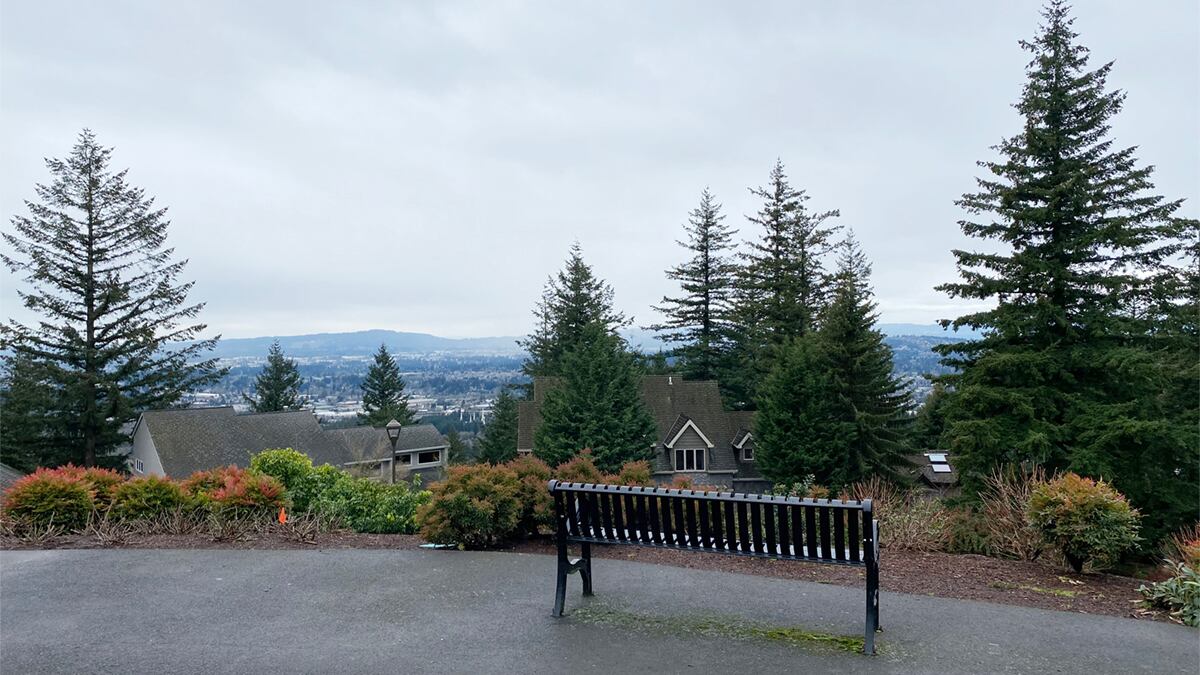Hiking a planned community in Lake Oswego might sound about as thrilling as watching paint dry while walking on a low-impact treadmill. But the suburb's Mountain Park neighborhood is hiding an entire trail system worth exploring.
Dubbed "Nature's Neighborhood," Mountain Park is the largest planned community in Oregon and was designed in such a way that the area's natural environment would be preserved as much as possible during development, which includes miles of walking trails. It's the brainchild of landscape designer Carl Halvorson, who, in the 1960s, envisioned a suburban utopia with recreational facilities, greenways, open spaces, public art and natural areas. (He also had plans to build a European-style shopping center that never got off the ground.) The idea was to limit the need for sidewalks and take pedestrians and cyclists off the roadway.
What we have today is the Mountain Park trail system, which is owned and maintained by the Mountain Park Homeowners Association. The quiet trails weave through parks, wooded areas and drainage channels.
Also? It happens to be built on an extinct volcano. Mount Sylvania is part of the Boring Volcanic Field, and a hike up to Nansen Summit Park is definitely a workout—the park sits at almost 1,000 feet. By comparison, Mount Tabor—Portland's own extinct volcano nestled in the middle of a residential neighborhood—maxes out at 636 feet.
While there are a number of places you can choose to begin your hike, Westlake Park is your best bet since it has a public restroom, which you will not find elsewhere along the trail. (You can also start at McNary Park if you aren't up for a trek.) There are green signs marked with a nondescript "PATH" posted throughout the Mountain Park trail system.

One of the coolest features about the hike are the walking trail tunnels, many of which are steel drainage tunnels with futuristic lighting out of a comic book. Many of the tunnels were built into the trail system to keep pedestrians safe from busy street crossings.
You'll feel a steady climb as you continue on up. As you start getting close to the summit, you'll see lots of luxury homes and some '80s-era McMansions. Once you reach the top, there really isn't much to the park itself, just a large grassy patch, a couple benches, and a weather station. But the view of the Tualatin River Valley and the West Hills instantly justifies the trip, especially if you plan for sunset. On a clear day you can even see Mount Hood. It's a nice spot to take a rest or even a picnic break before heading back down the loop.
Between the forests, greenspaces, and walking tunnels woven throughout the hike, you'll get a sense of Halvorson's effort to integrate nature as much as possible into the neighborhood, which all in all makes for a pleasant, pedestrian-friendly urban hike. Don't knock the 'burbs until you've tried them.
Nansen Summit Trail
Distance: 4.5 miles
Difficulty: Moderate
Drive time from Portland: 15 minutes
Directions: From Interstate 5 south, take exit 293 and keep right at the fork, following signs for Haines Street. Turn right onto Southwest 68th Avenue and drive 200 feet before turning a slight right onto Southwest Atlanta Street. After about a half-mile, turn another right onto Southwest Lesser Road and drive another half-mile before turning right onto Westlake Drive. Drive another half-mile before turning left onto Melrose Street. Westlake Park will be on your right. Right before you pass the Lake Oswego fire station, you'll see a turnoff on your right that takes you to the parking lot.
